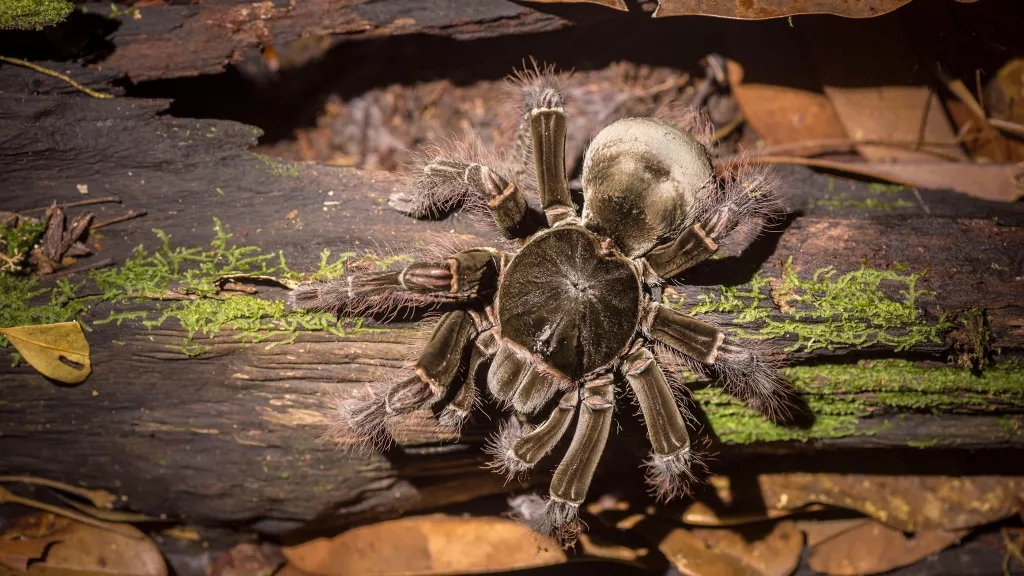It depends on who you ask.

The Goliathic bird eater, displayed near French Guiana, is the most massive spider known.
The term "arachnids" may be reminiscent of spiders: from creepy reptiles in the corners of a room to large, hairy creatures with fangs — like the mythical Shelob or Aragog — stalk you in the dark. But how old (and ferocious) can these arachnids grow? Even better, what's the biggest one ever?
Answering this question seems simple. Arachnids are octopus arthropods, which means that the taxon contains not only spiders, but also scorpions and ticks, as well as other smaller, rarer taxa. Spiders are the most diverse of arachnids (the 50,000th species, and this number is expected to grow). The question is, exactly what exactly is an arachnid is an open question.
Arachnids are part of a larger group of arthropods called cheetites. Crayfish are subdivided into smaller groups, with arachnids being a group, while horseshoe crabs (according to the order Xiphosura) and sea scorpions (Eurypterida) are separate but are related to arachnids.
The Eurypterids shown in the illustration are the largest arachnids ever recorded, comparable in size to humans.
The new phylogeny based on molecular analysis suggests that some terrestrial chelate fauna (spiders and scorpions) precede marine chelate fauna (horseshoe crabs and sea scorpions). However, while this claim is amply supported by genetic evidence, it is inconsistent with the fossil record.
This may seem like a pedantic paleontology, but it actually makes a huge difference when it comes to identifying the largest arachnids ever made.
According to the traditional view of arachnid family trees (ignoring horseshoe crabs and sea scorpions), it is likely that the largest extant arachnids are spiders.
There are two species of spiders that are strong contenders for the title of "the world's largest spider". The largest known spider is Theraphosa blondi, a 6-ounce (170-gram)-heavy spider with a body length of up to 5 inches (12 centimeters) and an 11-inch (28 centimeters) length, according to the American Association for the Advancement of Science (AAAS), when including its legs.
If the size of the spider is to be judged by the diameter of the leg spread, the largest spider is likely to be the giant hunter spider (Heteropoda maxima), whose leg spread is about 1 foot (30 cm) in diameter, making it about the size of a dinner plate. Despite its size, the spider was not discovered until 2001.
When we delved into the fossil record, we found that the largest arachnids ever recorded may not be spiders, but scorpions. It is a scorpion that lived during the Silurian-Devonian period (350 million to 450 million years ago) and is nearly 3 feet (1 m) long, five times the longest scorpion today. However, it should be noted here that an example of this species is described from a fossil finger, so the actual size of the animal is an educated guess.
These animals are the largest known arachnids, both extant and extinct, as arachnids are traditionally defined. But if sea scorpions and horseshoe crabs are indeed considered arachnids, as new research may suggest, then the largest extant arachnids are no longer spiders, but horseshoes.
The largest extant species of horseshoe crab, the Tachypleus tridentatus, can reach 31 inches (79.5 cm) wide
The largest extant species of horseshoe crab greatly exceeds the largest surviving spider. The largest trident in this population can reach 31 inches (79.5 cm) and weigh up to 9 pounds (4 kg), according to studies.
In terms of the largest species ever recorded, the title most likely belongs to one member of the now-extinct sea scorpion, a group scientifically known as eurypterids. Fossils suggest that many of these ancient marine predators are even comparable to humans.
The largest species in this group is the one that was discovered in 2007 and has claws up to 18 inches (46 centimeters) long. Based on its claws, the researchers estimated its body to be about 8 feet (2.5 m) long, which makes it not only the largest potential arachnid, but also the largest member of the entire group of arachnids (claws).